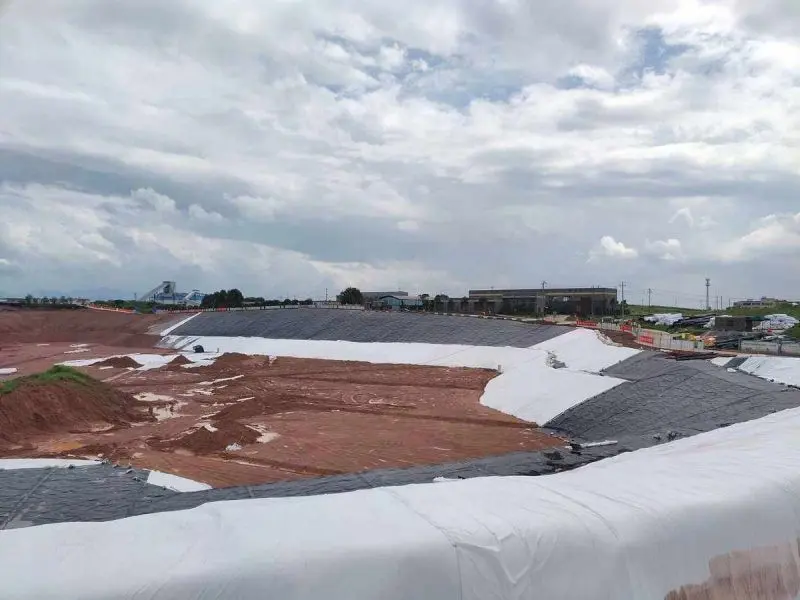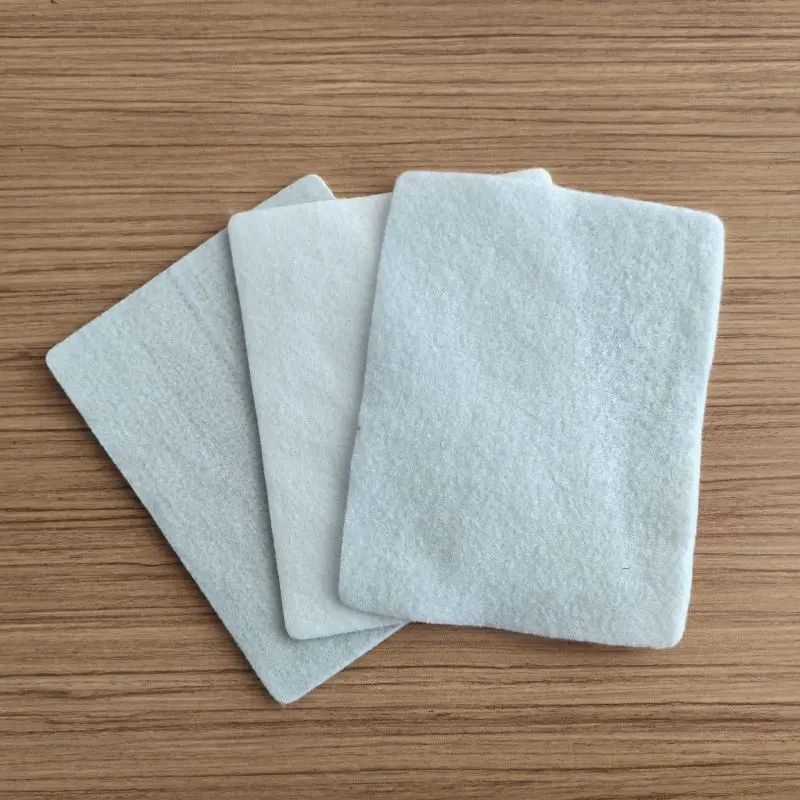![]() 300g PET geotextiles test report.pdf
300g PET geotextiles test report.pdf
Geotextile fabric is a synthetic textile material designed specifically for use in civil engineering and environmental applications. It is manufactured from polymers such as polypropylene, polyester, or polyethylene, and is engineered to exhibit certain physical and mechanical properties suited to its intended function.
Here are some key characteristics and uses of geotextile fabric:
Permeability: Geotextile fabric allows water to pass through while preventing soil erosion, making it useful for filtration, drainage, and erosion control in various civil engineering projects.
Separation: Geotextile fabric acts as a barrier between different layers of soil or aggregate materials, preventing mixing and maintaining the integrity of the structure. This is commonly used in road construction, railway ballasts, and landscaping.
Reinforcement: Geotextile fabric can enhance the tensile strength of soil, especially in areas prone to instability or erosion. It is used to reinforce slopes, embankments, retaining walls, and other earth structures.
Protection: Geotextile fabric provides protection to geomembranes, liners, and other vulnerable surfaces against punctures, abrasion, and UV degradation. It is used in landfill liners, reservoirs, and other containment applications.
Filtration: Geotextile fabric acts as a filter to prevent fine particles from migrating into drainage systems while allowing water to flow freely. This is essential for maintaining the long-term performance of drainage systems and preventing clogging.
Cushioning: In some applications, geotextile fabric is used as a cushioning layer to distribute loads evenly and reduce the risk of damage to underlying structures.
Geotextile fabric plays a crucial role in addressing South America's engineering and environmental challenges, from road construction and erosion control to mining, coastal protection, waste management, and beyond. Its versatility, durability, and cost-effectiveness make it an indispensable component of sustainable development and infrastructure resilience in the region.
945186.webp)
In the South American market, geotextile fabric finds diverse applications across various sectors, owing to its versatility and effectiveness in addressing engineering and environmental challenges. Here are some common applications of geotextile fabric in South America:
Road Construction: Geotextile fabric is extensively used in road construction projects throughout South America. It serves as a separation layer between subgrade soil and aggregate base materials, reducing the risk of mixing and maintaining pavement integrity. Additionally, geotextiles are used for reinforcement to improve the stability and load-bearing capacity of road embankments and slopes.
866434.webp)
Erosion Control: Given the region's diverse topography and climatic conditions, erosion control is a critical concern in South America. Geotextile fabric is employed for erosion control measures along riverbanks, coastlines, and hillsides to prevent soil loss, stabilize slopes, and protect infrastructure from damage caused by water runoff and weathering.
801050.webp)
Landfill Engineering: With increasing urbanization and industrialization, proper waste management is essential in South America. Geotextile fabric is utilized in landfill engineering to line containment cells, create leachate collection systems, and cover waste piles. It acts as a barrier to prevent contaminants from seeping into groundwater and surrounding soil, thus minimizing environmental impact.

Mining Industry: South America is rich in mineral resources, and the mining industry plays a significant role in many economies. Geotextile fabric is employed in mining operations for applications such as tailings management, slope stabilization, and environmental remediation. It helps control erosion on mine slopes, contain mine tailings, and facilitate rehabilitation of disturbed landscapes.
Soil Stabilization: In agricultural and civil engineering projects, geotextile fabric is used for soil stabilization purposes. It reinforces weak or unstable soils, provides support for embankments and retaining walls, and improves the load-bearing capacity of foundations. This is particularly important in regions prone to landslides or soil erosion.
Water Management: Geotextile fabric plays a crucial role in water management projects across South America, including canal lining, reservoir construction, and stormwater management systems. It helps prevent seepage, control sedimentation, and enhance the efficiency of drainage and irrigation networks, contributing to sustainable water resource management.
Place of Origin | Shandong, China |
Brand Name | Haoyang |
Geotextile Type | Non-Woven Geotextiles |
MOQ | 1000㎡ |
Application | civil engineering project |
Material | PP(polypropylene) PET (polyester) |
Color | White,black,green, etc |
Width | 1-10m |
Length | 50-100m/roll (at Request) |
Overall, geotextile fabric is an essential component in the construction, infrastructure development, and environmental protection efforts in the South American market, offering solutions for a wide range of engineering challenges and promoting sustainable development practices.
Download
Applications of Geotextile Fabric South American.pdf
Manufacturer of Geotextile Fabric
As one of China's foremost manufacturers of Geotextile Fabric, we take pride in supplying high-quality products tailored for the South American market. Our dedication to research, development, and production ensures that we offer competitive pricing without compromising on quality. We are grateful for your trust in choosing our products, and we assure you that partnering with us is your best decision. With our expertise and commitment to excellence, we are confident that our Geotextile Fabric will meet and exceed your expectations, contributing to the success of your projects in South America. Thank you for considering us as your supplier, and we look forward to a fruitful collaboration.
841.webp)

608.webp)
256.webp)
503.webp)
759.webp)
241.webp)

191.webp)